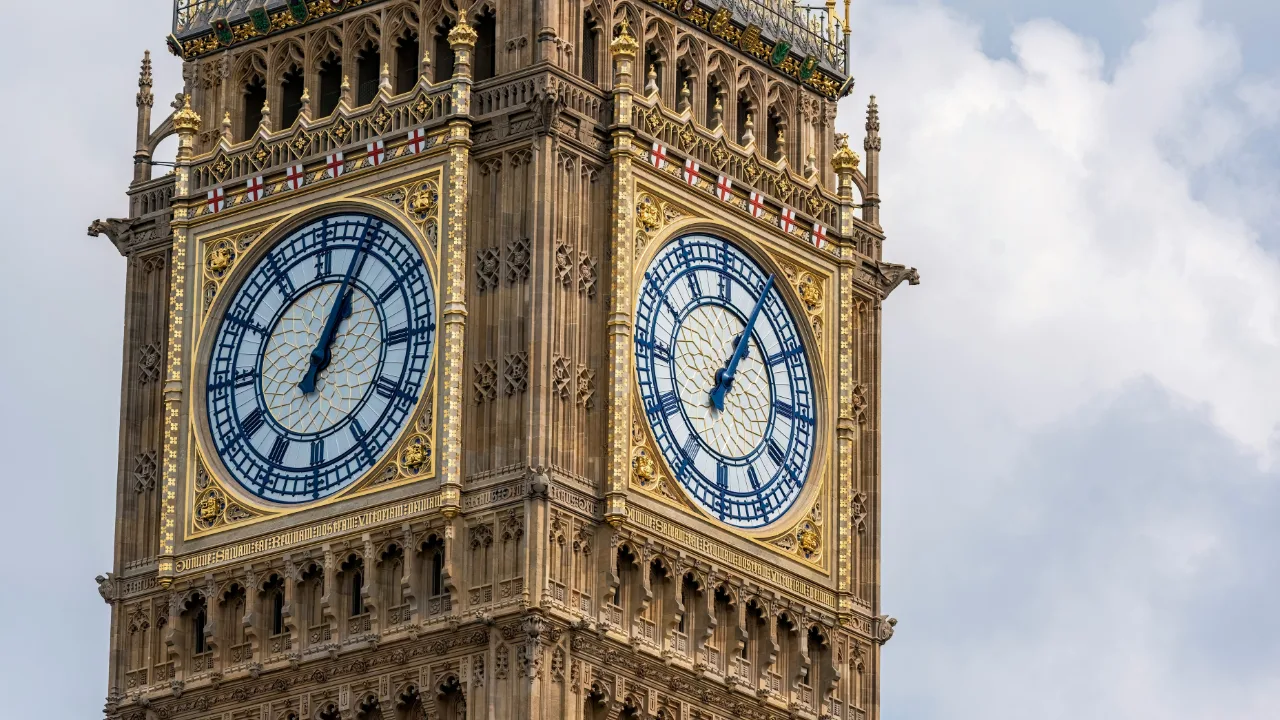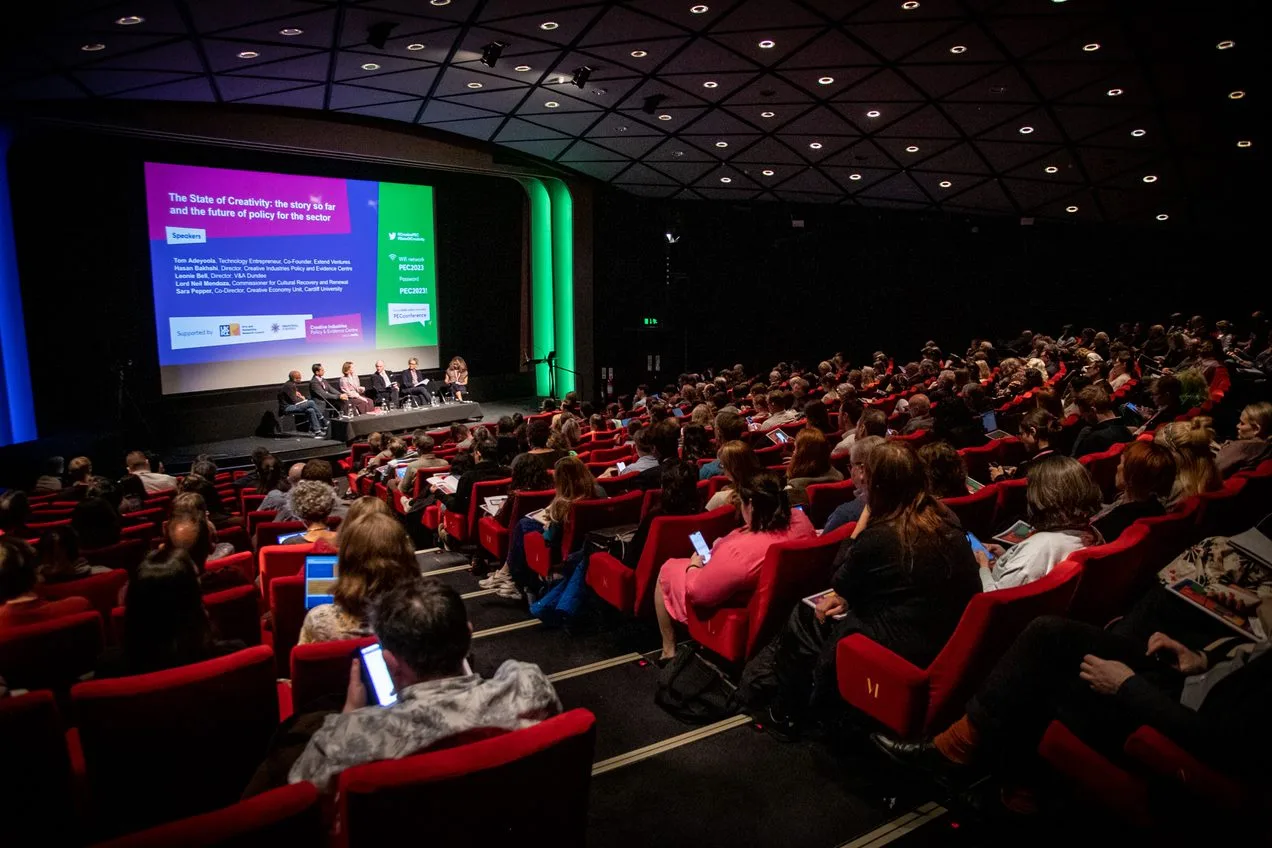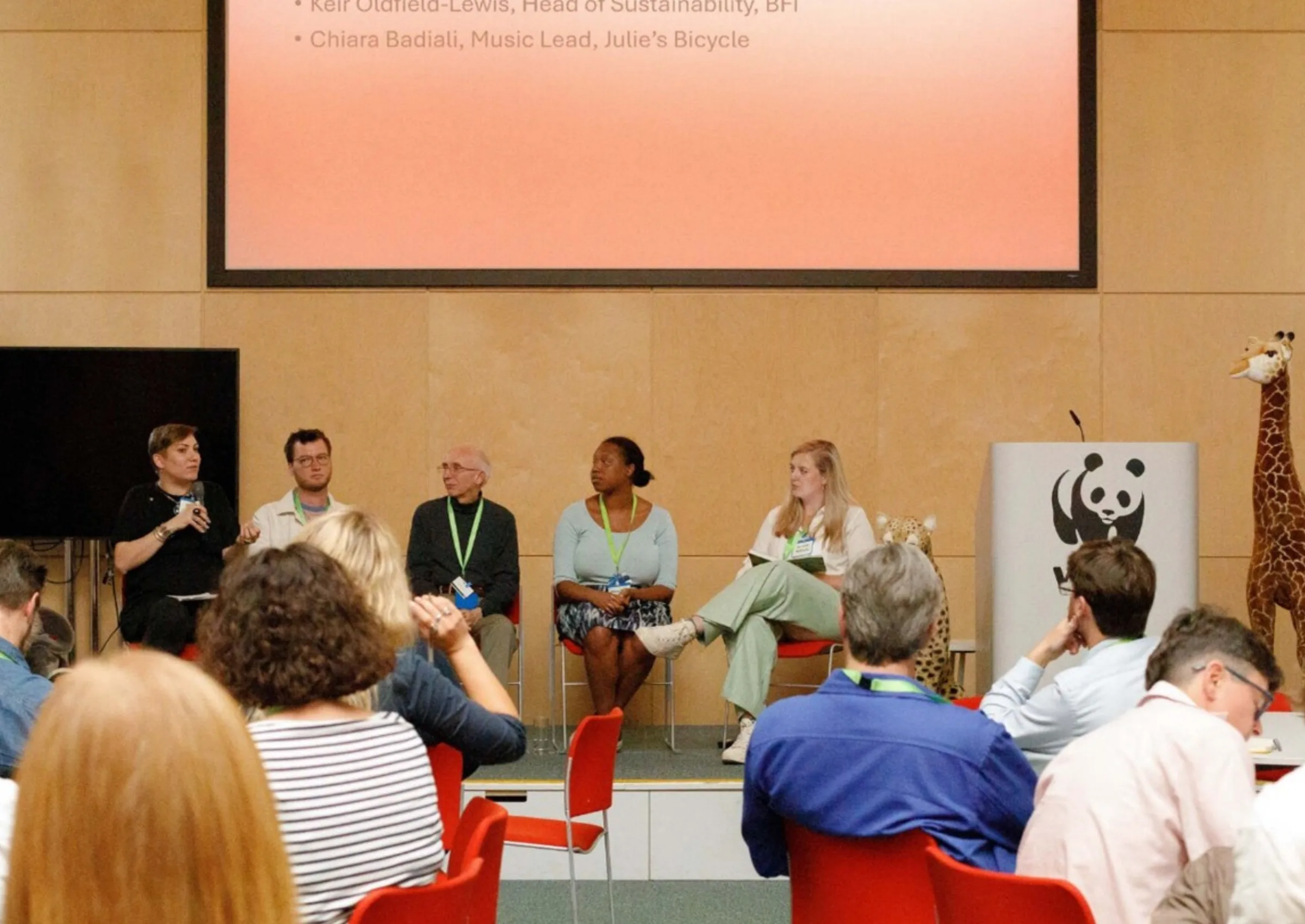On April 28th, ‘The Government’s Vision for the Broadcasting Sector’ (CP 671) was published. The White Paper comes in the wake of consultations and inquiries that focused on the Future of Public Service Broadcasting and the Future of Channel 4. Proposed interventions aim to equip British broadcasters to compete on the world stage, “against streaming giants like Netflix and Amazon”. Channel 4 has been singled out as “uniquely constrained in its ability to meet the challenges of the changing media landscape” (CP 671: 15).
Privatisation from government ownership and the abandonment of its publisher-broadcaster model (under which Channel 4 is not allowed to retain ownership of the intellectual property rights in its commissions) are identified as the key levers that will allow the broadcaster to grow and lift Channel 4 onto the global streaming stage.
In this blog, we take no position on the merits of privatising Channel 4. Issues relating to its public service remit and cultural contribution have been explored by the PEC elsewhere. Rather, we discuss the challenges for reforms to the broadcasting and production sectors from ownership of intellectual property (IP) in ‘TV-like content’, and assess the underlying ‘Terms of Trade’ framework that will underpin these reforms. We also point out implications of a wider trend linking control of content (IP) to control of data. Competition law interventions addressing data dominance in platform and streaming markets may be needed.
The Diagnosis
Undoubtedly there is growing competition for ‘audiences, programmes and talent, from new global video-on-demand providers with greater spending power’ (CP 671: 19). The White Paper argues that ‘these new global players – the Googles, Amazons, and Apples of this world – are successful because they provide convenience and integration’, and that ‘rights of access, carriage and prominence’ and ‘the data they have at their fingertips’ are at the core of this advantage (CP 671: 13).
There is indeed evidence of a dramatic fall in the share of TV advertising as a percentage of all display advertising (from 40% to 27% between 2015 and 2020) which threatens the revenue model of broadcasters (Ofcom, Media Nations 2021).
At the same time, we see growing value of international commissions and sales, both in absolute terms and also as a proportion of the overall market. In part this may be attributed to an inflation in production costs from the demand for high-end drama.
Source: UK Television Production Survey, Financial Census 2020, Oliver & Ohlbaum for Pact (Pact is the UK screen sector trade body representing independent producers)
If international commissions by on-demand services (such as Netflix, Amazon, Apple and Disney+) and secondary exploitation in international markets (of content produced initially for the UK market) are the drivers of growth, it is on the surface plausible to look for interventions relating to ownership of IP as a suitable policy lever. But how are the proposed interventions going to work? We focus here on Channel 4 as the most prominent target.
Ownership and Control of Intellectual Property
Channel 4 was established in 1982 as a publicly-owned but advertising-funded ‘publisher-broadcaster’ which would commission and broadcast content made by independent producers. As well as providing greater diversity of content for viewers, Channel 4 was conceived as a means of stimulating a competitive independent production sector in the UK.
To this end, Channel 4 is not allowed to retain ownership of the IP that subsists in the content it commissions. Instead, producers can exploit secondary and tertiary rights. International licensing of content and format rights are examples of areas where UK producers have been particularly successful. This is a component of the wider ‘Terms of Trade’ regime governing commissions between public service broadcasters (PSBs) and independent producers.
Under the Communications Act 2003, all PSBs are required to submit Codes of Practice to Ofcom about programme commissioning from independent producers, including specifications about the rights purchased and their duration.
Ofcom explains that –
The Codes are intended to be available to producers when negotiating deals. In practice, the main public service broadcasters have each generally agreed a set of standard terms (known as the Terms of Trade) with Pact, the largest trade association for the production sector. They have then submitted revised Codes to Ofcom which reflect the individual agreements reached with Pact. (Ofcom, Small Screen: Big Debate – Recommendations to Government on the future of Public Service Media, 15 July 2021, at 7.7)
Moreover, PSBs are required to commission a specified quota of content from qualifying independent producers. However, an unintended consequence of this regime has been to contribute to the rise of the so-called ‘Superindies’, a small constituency of very large consolidated operators that enjoy qualifying indie (QI) status (Barr, Kretschmer and Schlesinger (2020), Public service broadcasting, streaming services and the future for ‘terms of trade’).
The White Paper argues that Channel 4 ‘cannot derive significant revenues from production due to its publisher-broadcaster status, largely prohibiting Channel 4 from producing its own content – and limiting revenue from the sale of secondary rights. In the landscape that Channel 4 is operating within, which has evolved significantly and continues to evolve, these constraints inhibit its ability to grow and succeed’ (CP 671: 15). Thus, the stated aim of the proposed sale is to permit Channel 4 to produce and own a portfolio of IP rights to exploit in similar ways to other broadcasters and streaming services. This is in line with House of Lords Communications and Digital Committee Report on the Future of Channel 4:
Regardless of the question of ownership, we recommend that changes be made to the Terms of Trade for all PSBs, and the publisher–broadcaster model relaxed for C4C. Enabling C4C to invest in IP ownership would substantially enhance its financial resilience and market power in the face of global competition. (HL Paper 108: Para 67)
While remaining agnostic on the issue of privatisation, the Inquiry report suggests such reforms can be achieved without selling Channel 4, but this proposed alteration to the C4 remit would significantly alter the ‘PSB ecology’ of the UK screen production sector. However, in the committee report and the Government’s White Paper there is scant detail on the nature of proposed changes to Terms of Trade, commissioning quotas, qualifying Indie status and the publisher-broadcaster model.
In our view, it is necessary that a proper evaluation of concrete proposals should be conducted prior to any decision regarding the sale of Channel 4.
Competing in the Changing Media Landscape
A second key aim of the mooted Channel 4 sale is to allow it to compete with subscription video on-demand giants such as Amazon and Netflix. However, a problematic aspect of the White Paper is the absence of a clear sense of what ‘competing’ with global streaming services looks like.
The All4 on-demand streaming platform currently operated by Channel 4 Corporation (C4C) is the largest free streaming platform of its type in the UK in terms of content on offer. The extent to which Channel 4 could realistically compete with global on-demand streaming services and the desirability of attempting to do so is uncertain. A 2009 Competition Commission intervention on the proposed PSB video-on-demand service has been cited as an opportunity missed for the UK to be among the first to the streaming market. The subsequent proliferation of large services such as Amazon, Apple, Disney+, Netflix and many more providers, combined with the launch of the Britbox streaming service, a joint enterprise between BBC and ITV, point towards an already saturated market where subscribers’ ‘wallet share’ is under increasing pressure.
While attracting subscribers with bundles of exclusive content is a key pillar of the streaming model, another key element of on-demand video services is accumulation and control of valuable data pertaining to audience viewing habits and personal interests. Here the global streaming brands hold considerable informational advantages over Channel 4 as a provider of a largely domestic offering for UK audiences. These troves of valuable data inform the commissioning strategy of streamers as well as driving algorithmic recommendation mechanisms. As such, this type of data is deemed commercially sensitive and not shared with external production companies, broadcasters or Ofcom. A recent DCMS Committee Inquiry report (HC 156) recommended streaming services be required to:
Share top line viewing data—at the very least, the number of viewers—for PSB content they host with Ofcom and the relevant PSBs to enable full analysis of PSB reach, and the audio-visual landscape as a whole. (HC 156: 29)
The White Paper indicates no appetite to intervene on this or other aspects of the dynamic interplay between IP and data in this complex market. As we’ll argue in a forthcoming PEC discussion paper, ‘Terms of Trade’ rules, akin to those implemented to limit the buyer-power of PSBs, may need to be considered for streaming firms as their influence continues to grow. It is clear that many questions remain unanswered about the extent to which this reformed broadcasting system populated by PSBs, independent producers of varying scales and corporate configurations, and streaming services that potentially wield Strategic Market Status (SMS) will be regulated by Ofcom and/or the recently-established Digital Markets Unit (DMU).
The DMU was established to, ‘oversee a new regulatory regime for the most powerful digital firms, promoting greater competition and innovation in these markets and protecting consumers and businesses from unfair practices’. While the DMU, as part of the Competition and Markets Authority, was announced in 2020 (see Kretschmer, Gating the Gatekeepers) as central to the Government’s strategy in this sector and adjacent fields, it currently lacks the statutory powers which puts into question its potential efficacy. The statutory underpinnings for the DMU to set codes of conduct and fines for firms with ‘substantial and entrenched market power in the UK’ have been withdrawn from the Government’s legislative programme for the next parliamentary session. This signals ambivalence about the UK’s ‘neo-regulation’ approach to internet platforms.
Conclusions
While the White Paper contains a plausible diagnosis, we find that key elements of the Government’s plan lack detail, clarity and consistency. The program of policy interventions and reforms outlined could be potentially transformative for the broadcasting sector, and the most significant since the Communications Act 2003. However, a considerable volume of further work is required in order to clarify how these proposals will be achieved and on what bases.
If all ‘TV-like content’ should be ‘subject to similar standards’ (CP 671: 37) overseen by broadcasting regulator Ofcom, including content offered by video on-demand giants Amazon, Disney+, Netflix, we need to know what these standards will be and how they will be enforced. It seems curious that regulatory intervention in respect of the streaming services is limited to overseeing the character of content, while problematic issues around data and IP identified here are largely overlooked. Moreover, it makes no sense to withhold from the Digital Markets Unit (DMU) the ‘tools to ensure the most powerful tech firms operate on fair and reasonable terms with third parties’ (as the White Paper promises at CP 671: 36).
Related Blogs
Research resources on Creative Clusters
We’ve collated recent Creative PEC reports to help with the preparation of your Creative Cluster bid…
What UK Job Postings Reveal About the Changing Demand for Creativity Skills in the Age of Generative AI
The emergence of AI promises faster economic growth, but also raises concerns about labour market di…
Creative PEC’s digest of the 2025 Autumn Budget
Creative PEC's Policy Unit digests the Government’s 2025 Budget and its impact on the UK’s creative …
Why do freelancers fall through the gaps?
Why are freelancers in the Performing Arts consistently overlooked, unseen, and unheard?
Insights from the Labour Party Conference 2025
Creative PEC Policy Adviser Emily Hopkins attended the Labour Party Conference in September 2025.
Association of South-East Asian Nations’ long-term view of the creative economy
John Newbigin examines the ASEAN approach to sustainability and the creative economy.
Take our Audience Survey
Take our quick survey and you might win a National Art Pass.
Culture, community resilience and climate change: becoming custodians of our planet
Reflecting on the relationship between climate change, cultural expressions and island states.
Cultural Industries at the Crossroads of Tourism and Development in the Maldives
Eduardo Saravia explores the significant opportunities – and risks – of relying on tourism.
When Data Hurts: What the Arts Can Learn from the BLS Firing
Douglas Noonan and Joanna Woronkowicz discuss the dangers of dismissing or discarding data that does…
Rewriting the Logic: Designing Responsible AI for the Creative Sector
As AI reshapes how culture is made and shared, Ve Dewey asks: Who gets to create? Whose voices are e…
Reflections from Creative Industries 2025: The Road to Sustainability
How can the creative industries drive meaningful environmental sustainability?












